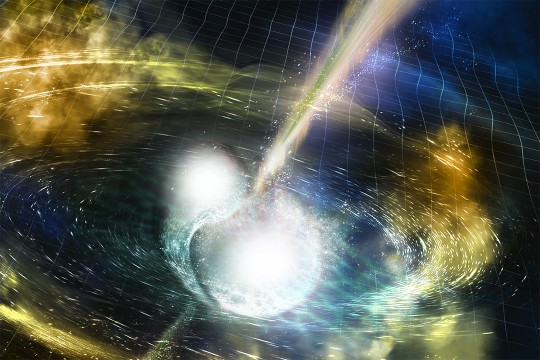News
Manuela Campanelli
-
July 1, 2019

RIT alumnus to serve as futures analyst for U.S. Agency for International Development
The fellowship program provides opportunities to outstanding scientists and engineers to learn first-hand about policymaking and contribute their knowledge and analytical skills in the policy realm. Brennan Ireland ’18 Ph.D. (astrophysical sciences and technology) will use his analytical skills to quantitatively evaluate countries to get a better picture of what their futures look like.
-
May 15, 2019

RIT to gather computational astrophysics experts from across the globe
Scientists conducting cutting-edge research in computational astrophysics will converge at RIT for two workshops in June. Experts from RIT, NASA Goddard Space Flight Center, Berkeley and other prestigious institutions will speak at the events hosted by RIT’s Center for Computational Relativity and Gravitation.
-
March 26, 2019

RIT researchers set to help LIGO resume hunt for ripples in space and time
The Nobel Prize-winning project that hunts for gravitational waves— ripples in space and time—is about to begin the longest and most sensitive observational run to date. And several RIT researchers are preparing to pore over the new data to help uncover some of the universe’s biggest mysteries.
-
January 22, 2019

RIT to collaborate with Argentine institute
RIT’s Center for Computational Relativity and Gravitation and Insituto Argentino de Radioastronomía are beginning new systematic pulsar timing studies. RIT is helping IAR upgrade its two radio telescopes to get them operational again after decades without use.
-
October 3, 2018

RIT leads project to simulate neutron star mergers
RIT is advancing computer simulations to predict, for the first time, the complete cycle of neutron stars merging with other neutron stars or black holes. The project is supported by $1.5 million from NASA. -
October 2, 2018

Model follows light to supermassive black holes
The hunt is on for orbiting pairs of supermassive black holes on the verge of collision. Researchers at RIT have built the first simulation that could lead scientists to them. -
October 16, 2017

RIT researchers part of breakthrough discovery
RIT researchers played a significant role in an international announcement today that has changed the future of astrophysics. The breakthrough discovery of colliding neutron stars marks the first time both gravitational waves and light have been detected from the same cosmic collision.




